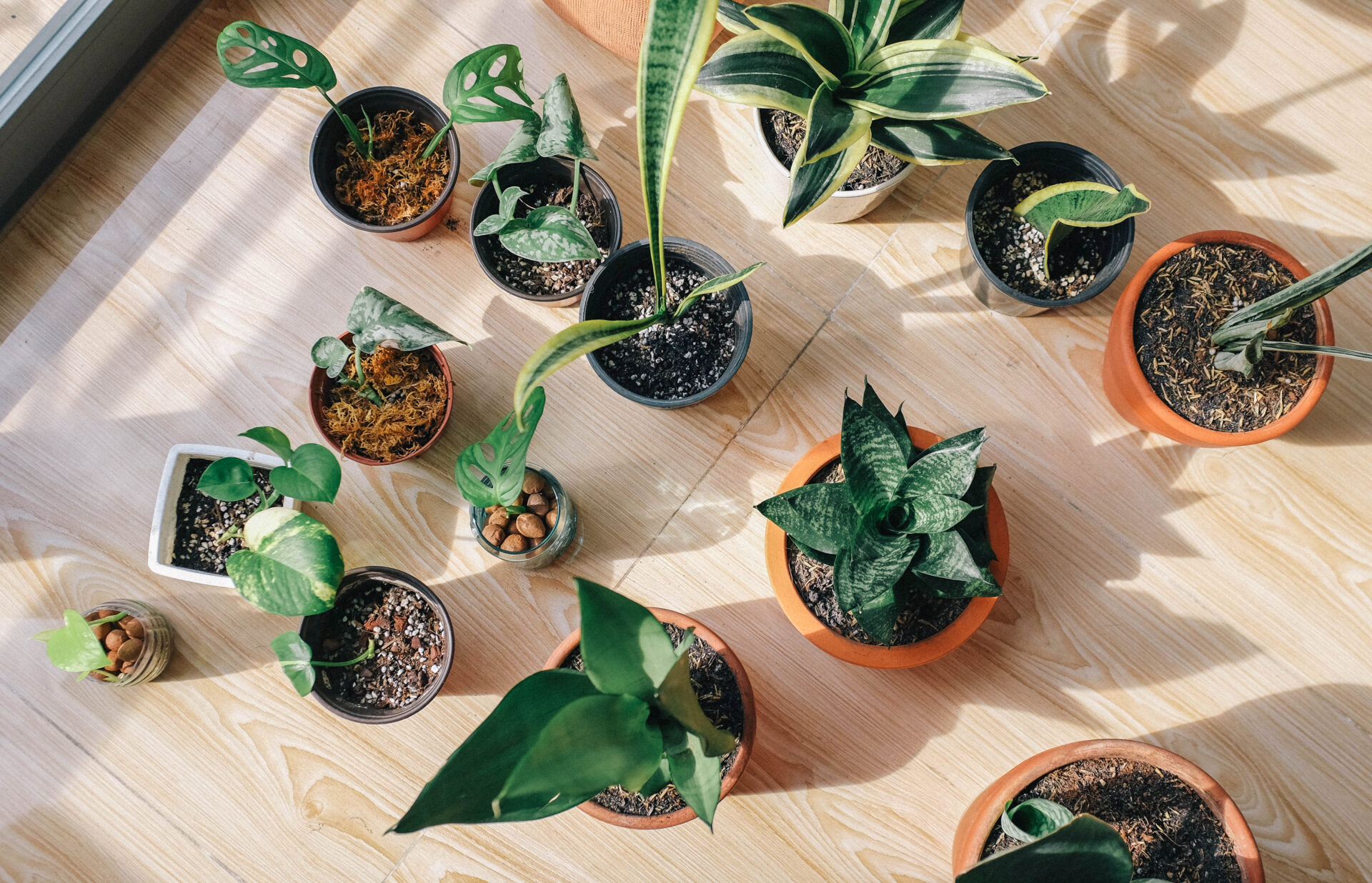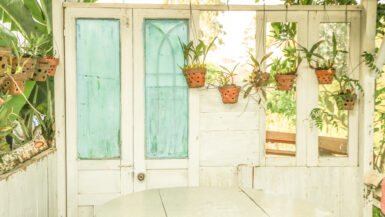As urban living spaces continue to shrink and the demand for fresh, locally grown produce rises, indoor vertical gardening has emerged as a sustainable solution for city dwellers and commercial growers. This innovative approach to cultivation allows for efficient use of space, reduced waste, and optimal growing conditions.
However, regarding indoor vertical gardens, there are two primary methods to consider: hydroponic and soil-based systems. In this article, we delve into the advantages and disadvantages of each technique, explore the key differences between them, and provide valuable insights to help you make an informed decision when embarking on your journey towards a thriving indoor vertical garden.
Join us as we compare and contrast hydroponic and soil-based indoor vertical gardens, weighing the benefits and challenges of each to help you cultivate a successful and bountiful garden in your urban oasis.
Nutrient Delivery Comparisons
In indoor vertical gardening, how plants receive their essential nutrients is critical to their overall health and productivity. Both hydroponic and soil-based systems have unique nutrient delivery methods, each with its own set of advantages and challenges.
In this section, we will delve into the intricacies of nutrient delivery in hydroponic and soil-based indoor vertical gardens, comparing their efficacy and highlighting key factors for successful implementation.
The Efficiency of Hydroponic Nutrient Delivery
Hydroponic systems rely on nutrient-rich water solutions to provide plants with the necessary elements required for growth. In these setups, plant roots are submerged in or exposed to the nutrient solution, enabling them to absorb nutrients without directly needing soil.
This direct access to nutrients facilitates faster growth and higher yields, with plants expending less energy on root development. Furthermore, hydroponic systems offer precision control over nutrient levels, pH, and other factors contributing to optimal plant health. To ensure the success of your hydroponic indoor vertical garden, check out our list of Essential Tools for Indoor Vertical Gardening Success.
Soil-based Nutrient Delivery and Its Benefits
In soil-based vertical gardens, nutrients are delivered through traditional soil or other growing media. Soil acts as a natural buffer, regulating nutrient availability and pH levels. This means plants grown in soil-based systems can be more forgiving of minor imbalances, providing a more accessible entry point for beginner gardeners.
Additionally, soil-based gardens often require fewer specialized tools and equipment, making them more cost-effective for small-scale growers. However, to ensure the success of your soil-based indoor vertical garden, it is essential to choose the right soil mix and maintain proper nutrient levels.
Challenges and Considerations in Nutrient Delivery
While hydroponic and soil-based systems can provide efficient nutrient delivery, each method has challenges. Hydroponic gardens demand constant monitoring and adjustment of nutrient levels, pH, and water quality, which can be time-consuming and require more expertise. On the other hand, soil-based gardens may be more susceptible to pests and diseases, necessitating vigilant monitoring and prompt action to prevent infestations.
Ultimately, the choice between hydroponic and soil-based nutrient delivery methods will depend on available resources, personal preferences, and the desired level of control over growing conditions. By thoroughly understanding the nutrient delivery mechanisms in both systems, gardeners can make informed decisions and optimize their indoor vertical gardens for maximum growth and productivity.
Maintenance and Pest Control Differences
When embarking on the journey of indoor vertical gardening, it’s essential to consider the maintenance and pest control requirements of your chosen growing method. Hydroponic and soil-based systems each have unique challenges and advantages in these areas, which can significantly impact the overall success of your garden.
The following subsections explore the maintenance and pest control differences between hydroponic and soil-based indoor vertical gardens. We provide valuable insights to help you create a flourishing and pest-free sanctuary within your urban living space.
The Low-maintenance Appeal of Hydroponic Systems
One of the primary advantages of hydroponic indoor vertical gardens is their relatively low maintenance requirements. With no soil involved, there is less mess to manage and reduced risk of soil-borne pests and diseases. Additionally, hydroponic systems often require less frequent watering, as the nutrient solution is recirculated and plants have direct access to water, minimizing the risk of over or under-watering.
However, hydroponic systems require regular monitoring and adjustment of nutrient levels, pH, and water quality to maintain optimal growing conditions. To ensure the success of your hydroponic garden during colder months, check out our guide on How to Grow a Thriving Indoor Vertical Garden in Winter.
Managing Pests and Diseases in Soil-based Gardens
While soil-based indoor vertical gardens may be more susceptible to pests and diseases, implementing a proactive pest management strategy can help to mitigate these risks. Regularly inspecting your plants for signs of infestation and promptly addressing any issues can prevent the spread of pests and diseases within your garden.
Maintaining proper air circulation, adequate lighting, and appropriate humidity levels can also create an environment less conducive to pest infestations. Incorporating organic pest control methods, such as introducing beneficial insects or applying neem oil, can also help manage pests in a chemical-free and environmentally friendly manner.
Choosing the Right System for Your Maintenance and Pest Control Needs
Selecting the most suitable indoor vertical gardening system for your needs will ultimately depend on available time, resources, and personal preferences. Hydroponic systems may appeal to those seeking a low-maintenance option with fewer pest control challenges. At the same time, soil-based gardens may be better suited to gardeners who prefer a more traditional approach and are willing to invest time and effort in managing potential pest issues.
By carefully considering the maintenance and pest control differences between hydroponic and soil-based indoor vertical gardens, you can confidently choose the right system tailored to your unique requirements and lifestyle.
Understanding Hydroponic and Soil-based Systems
Indoor vertical gardening has become popular as urban dwellers seek innovative ways to grow fresh produce in limited spaces. Hydroponic and soil-based systems are the two primary options when choosing the proper method for your indoor vertical garden. Each system has advantages, challenges, and specific requirements you must consider before deciding.
This subsection will provide a comprehensive overview of hydroponic and soil-based systems, delving into each method’s key components, benefits, and challenges. This knowledge will empower you to make an informed decision and set the foundation for a successful and flourishing indoor vertical garden.
Getting to Know Hydroponic Systems
Hydroponic systems are a soilless method of growing plants in which the plants’ roots are exposed to nutrient-rich water solutions. This provides them with essential nutrients required for growth. This direct access to nutrients accelerates growth rates and increases yields, making hydroponic systems an attractive choice for commercial growers and urban garden enthusiasts.
Some key benefits of hydroponic systems include efficient use of space, reduced water consumption, and minimal risk of soil-borne pests and diseases. However, these systems demand constant monitoring and adjustment of nutrient levels, pH, and water quality, requiring a higher level of expertise and commitment from the gardener.
Exploring Soil-based Systems
Soil-based systems incorporate traditional soil or other growing media to support plant growth in indoor vertical gardens. The soil is a natural buffer in these systems, regulating nutrient availability and pH levels. This makes soil-based gardens more forgiving of minor imbalances and provides an accessible entry point for beginner gardeners.
Some advantages of soil-based systems include their cost-effectiveness, versatility, and the potential to support a wider variety of plant species. However, soil-based gardens may be more susceptible to pests and diseases and require frequent watering and diligent maintenance to ensure optimal growing conditions.
Comparing System Components and Requirements
When deciding between hydroponic and soil-based indoor vertical gardens, it is crucial to consider each system’s specific components and requirements. Hydroponic gardens often require specialized tools and equipment, such as nutrient reservoirs, pumps, and monitoring devices, which can be more expensive to set up initially. On the other hand, soil-based gardens typically have lower startup costs but may demand more time and effort in terms of maintenance and pest control.
Factors to Consider in Choosing the Right System
Selecting the most suitable indoor vertical gardening system will depend on several factors, such as your available space, budget, and personal preferences. Before choosing between hydroponic and soil-based systems, it is essential to evaluate your gardening goals, expertise, and desired level of involvement in the maintenance process.
Additionally, consider the types of plants you wish to grow, as some species may thrive better in one system over the other. By considering these factors and understanding the intricacies of hydroponic and soil-based systems, you’ll be well-equipped to create a thriving indoor vertical garden that aligns with your unique needs and aspirations.
Water Usage Efficiency in Indoor Vertical Gardens
Efficient water usage is a crucial factor to consider when evaluating the sustainability and environmental impact of indoor vertical gardening. With the increasing global concern about water scarcity and conservation, it’s essential to assess the water efficiency of both hydroponic and soil-based systems.
In this subsection, we will explore the water usage efficiency of hydroponic and soil-based indoor vertical gardens, compare their resource management capabilities, and highlight the benefits of each system.
By understanding the water usage dynamics in these gardens, you can create an eco-friendly, resource-efficient indoor vertical garden that aligns with your values and contributes to a more sustainable future.
The Water-saving Potential of Hydroponic Systems
Hydroponic systems offer significant advantages regarding water usage efficiency, making them an appealing choice for environmentally conscious gardeners. In these systems, plants are grown in water-based solutions, with nutrient-rich water circulated through a closed-loop system. This recirculation process dramatically reduces the water required compared to traditional soil-based gardens, as the water can be reused multiple times before replenishing.
Additionally, hydroponic gardens reduce water waste through evaporation and runoff, as the system is designed to minimize water loss. Overall, hydroponic systems can save up to 90% of water compared to traditional soil-based gardens, contributing to more sustainable urban agriculture practices.
Optimizing Water Usage in Soil-based Gardens
While soil-based indoor vertical gardens may consume more water than their hydroponic counterparts, there are still ways to optimize water usage and minimize waste in these systems. By employing efficient irrigation techniques, such as drip irrigation or self-watering planters, gardeners can ensure that water is delivered directly to the plant roots, reducing evaporation and runoff.
Choosing the right soil mix with high water retention capabilities can also help minimize water waste. Proper watering practices, such as watering at the right time and monitoring soil moisture levels, can contribute to efficient water usage in soil-based indoor vertical gardens.
Assessing the Environmental Impact of Water Usage
When comparing the water usage efficiency of hydroponic and soil-based systems, it is essential to consider the broader environmental implications. While hydroponic gardens may consume less water, they often rely on synthetic nutrient solutions, which can have ecological repercussions if not managed responsibly. Conversely, soil-based gardens can incorporate organic materials, such as compost, to provide nutrients in a more environmentally friendly manner.
However, the increased water usage in soil-based systems should not be overlooked. Gardeners must weigh each system’s pros and cons and make informed decisions based on their values and priorities.
Creating a Water-wise Indoor Vertical Garden
Efficient water usage is vital to sustainable indoor vertical gardening, regardless of whether you choose a hydroponic or soil-based system. By understanding the water usage dynamics of each system and implementing best practices for water conservation, you can create a thriving indoor vertical garden that is both eco-friendly and resource-efficient.
Ultimately, the key to a successful and sustainable indoor vertical garden lies in balancing the needs of your plants with responsible stewardship of our planet’s precious resources.
Space Utilization and Crop Yield
One of the most critical factors in choosing between hydroponic and soil-based indoor vertical gardens is the efficient use of available space and the potential for high crop yields. In this subsection, we will delve into the space utilization and crop yield dynamics of hydroponic and soil-based systems, highlighting the advantages and challenges of each method. By understanding these crucial aspects, you can optimize your indoor vertical garden to maximize your limited urban living space while maximizing your harvest potential.
Maximizing Space Efficiency with Hydroponic Systems
Hydroponic systems are renowned for their efficient use of space, making them an attractive option for urban gardeners with limited room to grow. Plants are grown in water-based nutrient solutions in these soilless systems, allowing for more compact and flexible arrangements. This space-saving design enables gardeners to grow more plants in a smaller area, increasing crop yields.
Moreover, hydroponic systems often facilitate faster plant growth and higher harvest rates, increasing space efficiency and productivity. However, it’s essential to consider that hydroponic systems may require additional equipment, such as nutrient reservoirs and pumps, which can occupy valuable space in your indoor garden.
Optimizing Space and Yields in Soil-based Gardens
While soil-based indoor vertical gardens may not be as space-efficient as their hydroponic counterparts, they still offer substantial benefits regarding space utilization and crop yield. Using vertical gardening techniques, such as tiered planters or wall-mounted systems, soil-based gardens can make the most of vertical space, allowing for increased plant density and higher yields.
Additionally, soil-based systems can support a wider variety of plant species, providing greater diversity in your garden and expanding your harvest potential. To optimize space and yields in soil-based indoor vertical gardens, selecting appropriate plant varieties, choosing the right soil mix, and implementing adequate watering and maintenance practices are essential.
Considering Plant Growth Patterns and Compatibility
When evaluating the space utilization and crop yield potential of hydroponic and soil-based systems, it’s crucial to consider the growth patterns and compatibility of the plants you wish to cultivate. Some plant species may thrive better in one system over the other, influencing their growth rates, size, and overall productivity.
Plants with extensive root systems require more space in a soil-based garden, while plants with shallow roots are better suited for hydroponic systems. By carefully selecting plant varieties well-adapted to your chosen system, you can optimize your indoor vertical garden for space efficiency and crop yield.
Striking a Balance between Space Utilization and Crop Yield
The decision between hydroponic and soil-based indoor vertical gardens ultimately comes down to balancing the benefits and challenges of each system in terms of space utilization and crop yield. Hydroponic systems may offer greater space efficiency and faster growth rates but can also demand more specialized equipment and expertise.
On the other hand, soil-based gardens may provide more flexibility in plant variety and a more traditional gardening experience but may require more diligent maintenance and monitoring. By considering your available space, gardening goals, and personal preferences, you can select the ideal system that aligns with your unique needs and aspirations, enabling you to create a thriving and bountiful indoor vertical garden.







Leave a reply